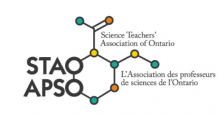Asubpeeschoseewagong First Nation, also known as Grassy Narrows, is an Ojibway community 80 km north of Kenora, Ontario, with just under 1,000 members who live there. During the 1960s and 1970s a pulp and paper mill contaminated the soil and the nearby English-Wabigoon river with mercury that has resulted in widespread poisoning of soil, animals and people. The full extent of the poisoning has only recently been fully acknowledged, though the community has been feeling the effects now for generations. In this study students will look at the science behind heavy metal poisoning and also the long-term effects it has on people and their culture. It will also examine how non-indigenous industry directly affects the lives of Indigenous people. This lesson will highlight how this community is closely connected to its environment, not just physically but mentally and spiritually, and look at ways of accessing voice from that community.
Related Resources:
SCH4C LEVELS OF INQUIRY THROUGH CHEMICAL REACTIONS
Categories: Lesson Plan
This lesson plan is separated based on the 4- level model of inquiry, as outlined in "Simplifying Inquiry Instruction" by Randy L. Bell, Lara Smetana, and Ian Binns (link in resources). This lesson... read more
USING MAKEBLOCK NEURONS TO COLLECT DATA ABOUT WHAT PLANTS NEED (GRADE 3)
Categories: Lab/Student Activity, Lesson Plan
The students will learn about the needs of plants by using a data collection tool (Makeblock Neurons). This tool will allow students to measure the temperature and humidity around a plant as well as... read more
Blood Pressure and Circulatory Lab Investigation
Categories: Lab/Student Activity, Lesson Plan
Author: Richard Armacinski, Don Galbraith Award winner, Brock University This lesson plan consists of a minds on activity, an in-class lecture, a lab activity, and a consolidation and connection... read more
